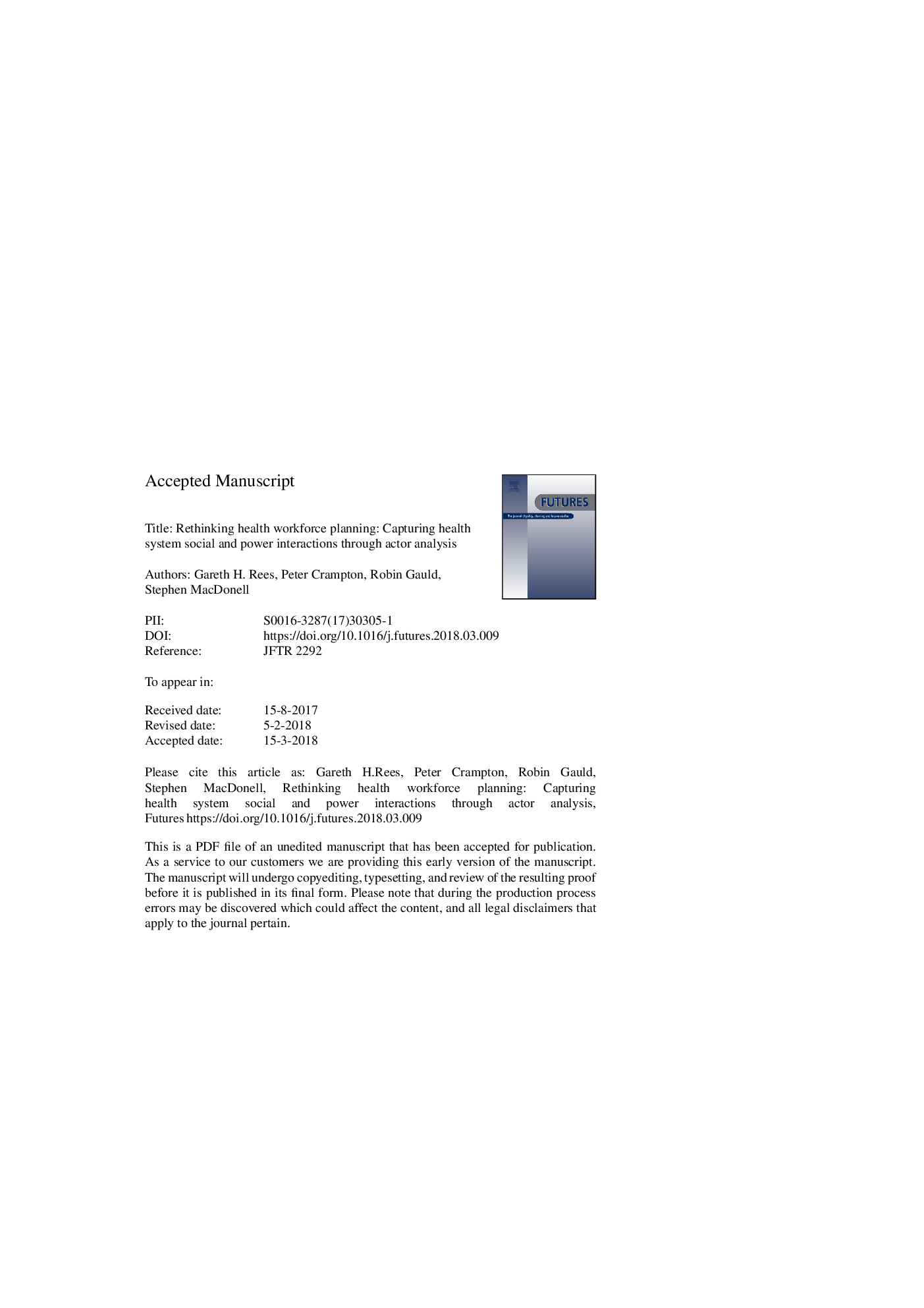| Article ID | Journal | Published Year | Pages | File Type |
|---|---|---|---|---|
| 7423713 | Futures | 2018 | 38 Pages |
Abstract
Future health systems will be required to accommodate changing social and treatment environments along with new and not-before-contemplated health care roles. Thus, health workforce planning is likely to benefit from improved problem identification, response formulation and data and methods that provide deeper understandings of socially influenced systems. Actor analysis is able to facilitate this through its examination of actor goals, interactions, and influences. We explore the use of this infrequently reported method in the context of health workforce planning. Through an embedded mixed methods design, we draw on data from inductive document analysis, deductively coded semi-structured interview responses from two separate but interconnected health sub sectors and numerically transform these to comply with the selected actor analysis software's input requirements. Our findings underline the importance of actor analysis as an investigative resource for delineating actor positions on a range of strategic issues pertinent to health workforce futures to reveal a different perspective of the system's evolution than that derived from conventional health workforce forecasting methods. A hierarchy of critical issues and the influential actors that hold sway over the workforce discourse are found, providing some insight into why conventional workforce plans can provide less than expected results.
Related Topics
Social Sciences and Humanities
Business, Management and Accounting
Business and International Management
Authors
Gareth H. Rees, Peter Crampton, Robin Gauld, Stephen MacDonell,
